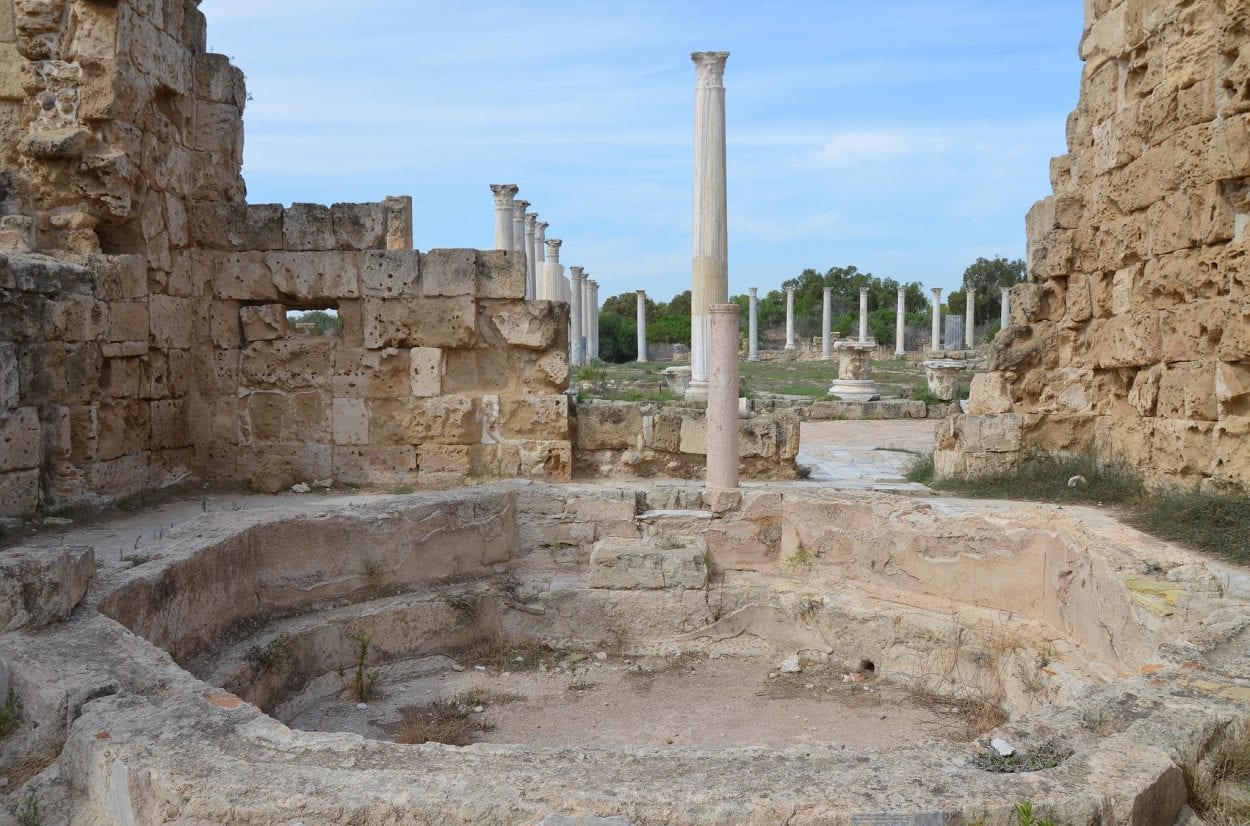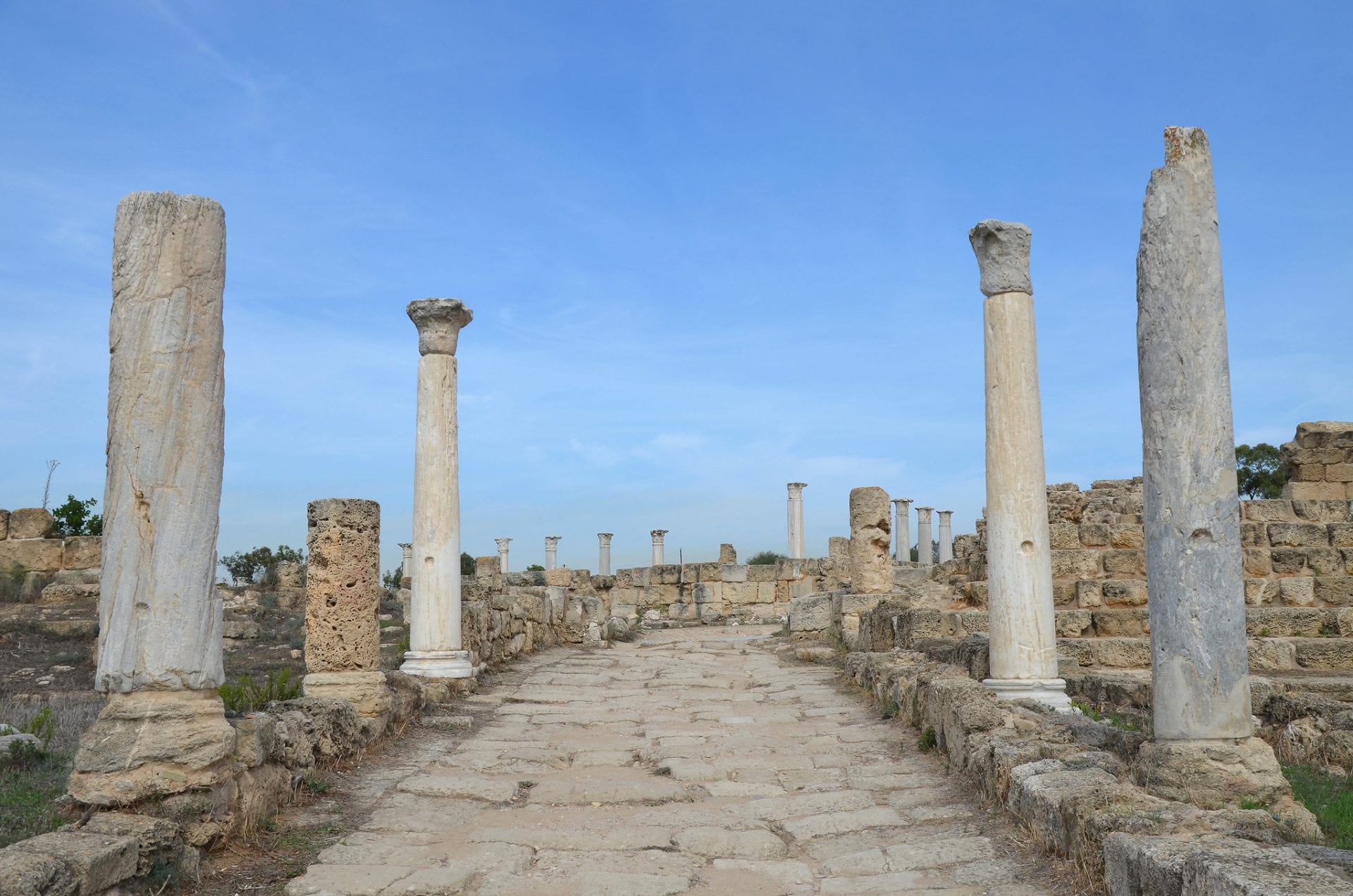Salamis is an archaeological site and an ancient city-state, located at the mouth of the River Pedieos in Cyprus.
The earliest evidence of occupation dates from around the 11th century BC during the Late Bronze Age III, when migrating tribes from Anatolia and Achaeans from Greece settled in Cyprus.
According to mythology, the city was founded by Teucer, the son of King Telamon of Salamis Island. Teucer was a renowned archer who fought alongside his half-brother, Ajax the Great in the Trojan War.
As the Iliad came to its conclusion, Ajax falls upon his own sword and commits suicide after being tricked by Athena to dishonour himself. Because of his half-brother’s suicide, Teucer stood trial before his father, where he was found guilty of negligence for not returning with Ajax’s body.

King Telamon disowned Teucer and banished him from his kingdom on Salamis Island. Teucer then joined King Belus II in his campaign against Cyprus and founded the city of Salamis, naming it after his former homelands.
The history of Salamis during the early Archaic and Classical periods is reflected in the narrations of the Greek historian Herodotus and the much later speeches of the Greek orator Isocrates.
Isocrates mentions Evagoras I, King of Salamis from 411–374 BC who was presented as a model ruler. Under his reign, the city prospered as a centre of Greek culture and art, adopting the Greek alphabet in Cyprus in place of the older Cypriot syllabary. After Alexander the Great conquered the Persian Empire, Ptolemy I of Egypt ruled the island of Cyprus with Salamis being the seat of power for the island.

By the Roman period, Salamis was part of the province of Cilicia, but the Hellenistic capital of Cyprus was moved from Salamis to Paphos. The loss of status did not diminish the importance of Salamis, which was favoured by the Roman emperors Trajan and Hadrian. The Romans restored existing structures and established new public buildings such as a gymnasium, theatre, amphitheatre, stadium, public baths, temples and a large Roman agora.
A series of earthquakes led to a physical deterioration of the city structures. Salamis was subsequently reconstructed by the Byzantine Emperor Constantin the Second and renamed to Konstantia. Although smaller in scale to the Roman precursor, Konstantia once again took the title of capital city from Paphos and became an Episcopal seat.
Silting of the city harbour led to a gradual decline in the population that was largely dependant on trade. Salamis was finally abandoned in the 7th century AD, due in part to further earthquakes in the region and because of the Arab invasions from AD 647.
Header Image Credit : Jon Culver





